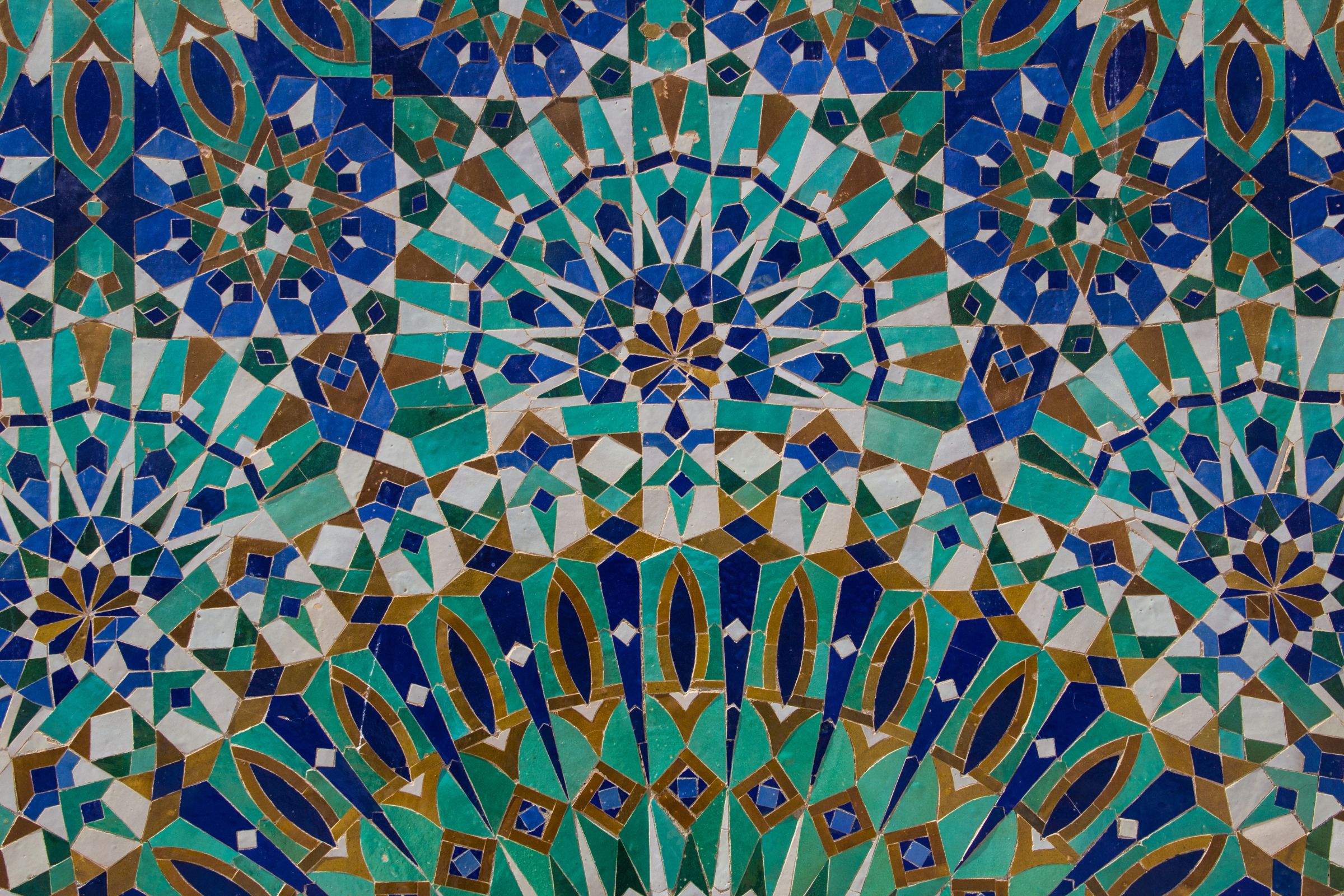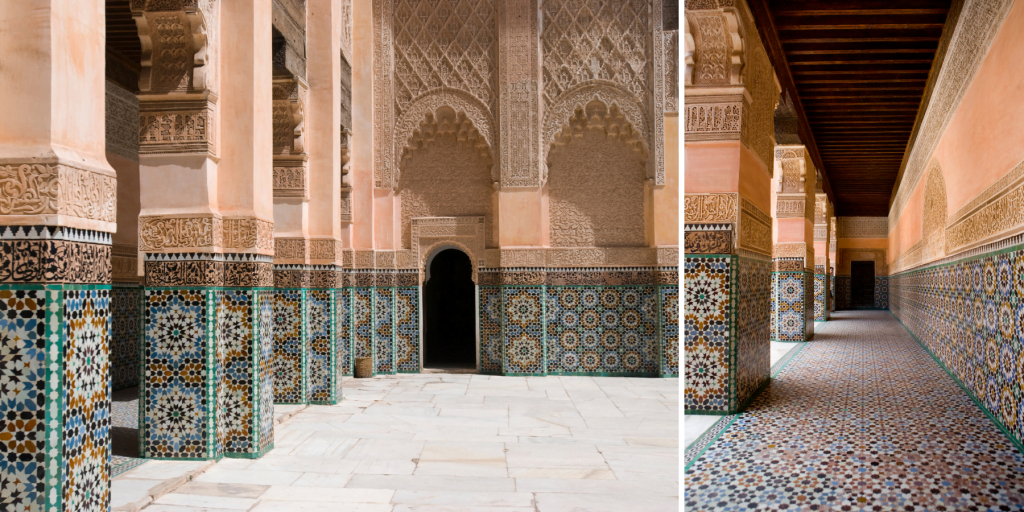
The Artisans of Morocco – Zellige Tiling
Mention Moroccan design and one thing will usually top the list: zellige tiling.
The intricate shapes, patterns and colours of zellige mosaics are a key element of Moroccan interiors. Cut into a variety of shapes and configurations, the tiling has been used for centuries to create the geometric shapes core to traditional Arabic design.
And it continues to pack a mighty artisanal punch to this day. Made by hand, zellige is not uniform – and it’s this ‘imperfection’ that expresses the presence of people in its production, not machines. That’s its beauty.

One of the finest examples of zellige in Marrakech can be seen at the Ben Youssef Madrasa
The earliest fragments of zellige were found in Tunisia and are thought to date back to the tenth or eleventh century. The tiling went on to become a defining feature in the interiors of Northern Africa and Andalusia, used everywhere from walls to fountains and minarets.
The complex mosaic patterns we know today were popular by the early fourteenth century. But over time, the use of zellige lessened in places like Tunisia and Andalusia. In Spain, zellige became so popular in fact that tilemakers had to develop new production methods to allow them to mass produce tiles. But the popularity of zellige never waned in Morocco. Here, age old production techniques held firm – then and now.
Production is concentrated around Fez, to the east of Morocco, and Tetouan, to the north. The first step to creating the tiles is kneading the clay with water before it is partially dried in the sun – usually in spring and summer when the heat is right for this process.
A master craftsman then flattens the clay by hand to create square tiles – usually 10cm by 10cm – and the tiles are hand-glazed in a rainbow of colours. The firing process is what gives the tile their signature variation of shades and tones. The colour is applied by hand and the tiles are then baked in traditional wood-fired Moroccan kilns. The uneven circulation of heat in these kilns circulates is what gives the tiles their signature ‘uneven’ tone.

Now comes the tricky – and highly skilled – part. Because it’s now that the master craftsmen create the host of zellige shapes – from hexagons to stars and fish scales – that are used to create intricate mosaic patterns. The tiles go through the hands of three master craftsman: the first draws the shapes on the raw tile, the next cuts it by hand, the third finishes the edges. The cut tiles are then placed in frames before being grouted together to create panels. It is painstaking and skilled work, using techniques passed down through centuries, patterns and layouts that are memorised by rote.

We use a lot of zellige at El Fenn – particularly in our bathrooms on walls and floors. And what we love is that zellige is a world away from the blank perfection of so many modern surfaces. But sadly, the art of zellige is under threat. Students at artisan schools all over Morocco can still enroll to study the craft, but fewer and fewer are doing so. It is an ancient – and beautiful – skill that must be preserved for future generations.



